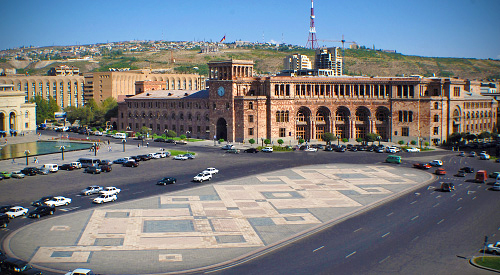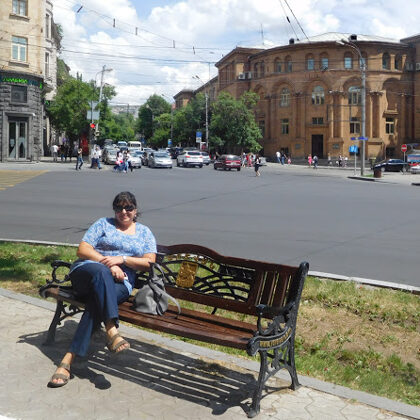 Alexander Tamanian with his beloved wife Camilla
Alexander Tamanian with his beloved wife Camilla
Between 1904 -1906, Alexander Tamanian worked on the reconstruction of The
Armenian Apostolic Church of St Catherine on Nevsky Prospekt in St Petersburg. Alexander wed Camilla in that beautiful church in 1908!
 The
Armenian Apostolic Church of St Catherine
The
Armenian Apostolic Church of St Catherine
The happy
couple had four children. Maria, the eldest daughter, was born in 1908,
son George (Gevorg) was born in 1910, daughter Varvara was born in 1916 and
youngest son Julius (Yuliy) was born in 1922.
 Alexander and Camilla with their daughter Maria and son George (Georgiy, Gevorg) in 1914
Alexander and Camilla with their daughter Maria and son George (Georgiy, Gevorg) in 1914
The
Tamanian family was united by great love, which helped them live
through and overcome many difficulties. Major life-changing and
challenging events included two Revolutions of 1917 and living under the rule of the Provisional Government in Russia. Fearful about his family's safety, Alexander Tamanian moved them to Anapa, a town in Krasnodar area on the Black Sea coast in September 1917, while himself remaining and working in St Petersburg. In 1919, he went to Anapa to join his family and then left for Armenia to assist the developement of his Motherland, the First Armenian Republic. He worked tirelessly on the design of the master plan of Yerevan, the capital of the independent Armenia and on many other urgent tasks.
A change of government took place in Armenia in 1919 and the letters from Anapa were not reaching Alexander Tamanian. He did not know anything about his family. Meanwhile in Anapa, his wife Camilla did not know anything about him and to support her family baked pastries for sale. One can only imagine how tough the years of the separation were for the Tamanians. Interestingly, one letter which was sent by Alexander to his family in 1919, miraculously appeared in 1962, but this is another interesting story.
At last, brave Camilla Tamanian decided to go to Yerevan to join her beloved Alexander (she called him Shurochka). With great difficulties which took months, having sold everything they had, the family of the great architect traveled to Armenia independently, without anyone's help
on a cart with horses and by train, through Krasnodar, Baku, Georgia... Finally having reached the city of Alaverdi in Armenia, the family huddled for three days in a nook under the stairs
at the railway station!!! They no longer had any hope of
someday
seeing their beloved husband and father. Only ten-year-old Gevorg spoke Armenian which made things even more difficult. As fate would have it, Mr Levon Shant, one of the leaders of the First Armenian Republic, arrived by train to Alaverdi. The man in charge of the station told him all about Alexander Tamanian's family's poverty-stricken situation and Mr Shant immediately invited Camilla and the children to his carriage. Incredibly Alexander Tamanian was at the time in the town of Alexandropol (later called Leninakan, now called Gyumri) for work, when this particular train approached the train station. Out of curiousity Alexander went to see who had arrived on the train and... hugs, tears, joy, happiness! The Tamanian family was reunited in 1920.
The political situation in Armenia was very dangerous and in April 1921, the Tamanian family moved to the city of Tabriz in Iran. On the way to Iran, great architect's skills were utilised and thanks to him, a raft was built to ferry Armenian troops in the Julfa region from one bank of the fast Araks River to the other!
 Alexander Tamanian with his daughter Varvara (Arochka) and youngest son Yuliy
Alexander Tamanian with his daughter Varvara (Arochka) and youngest son Yuliy
In Tabriz, Alexander Tamanian established a successful workshop and worked tirelessly to support his family, hoping that better living conditions would improve the health of his dear ones. Tragically, soon after the move, the family suffered a great loss when the eldest daughter Maria fell ill and passed away. She was only 13 years old. How to go on, because no parent should outlive their child... It was a heartbreaking time for the Tamanian
family. As life would have it, a happier time followed when their son
Yuliy (Julius) was born in 1922.
Meanwhile the Armenian Soviet Government had
sent numerous official invitations to Alexander Tamanian, urging him to
return to Armenia to work in his field of expertise. The Tamanian family
returned to Armenia in March 1923. The capital city Yerevan was a blank
canvas where Maestro had the freedom and scope to build from his
imagination a new Yerevan, a "garden city" for future generations to
enjoy! And create it, he did!
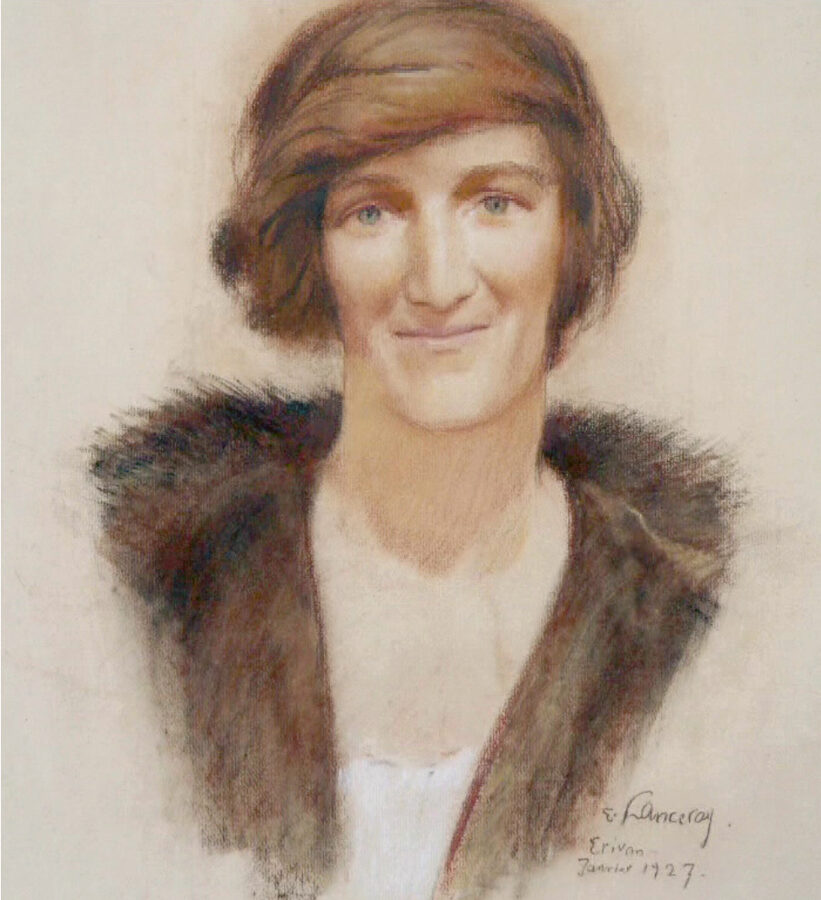
Portrait of Camilla Tamanian by Eugene Lanceray, Yerevan, 1927
Camilla Tamanian nobly endured all the hardships and tribulations that befell
her family. The European luxury and splendour of St Petersburg must
have stayed in her dreams. However she embraced the life in Yerevan with
strength and determination and created a welcoming home for her family and many visitors - artists, writers, architects, singers. A close friend and renowned Armenian poet Avetik Isahakian wrote in his
memoirs titled "In memory of the incomparable Tamanian":
The Tamanian couple were famous for
their warm hospitality. They turned their home into the most attractive
meeting and conversation place in Yerevan. The guests usually left with a
feeling of deep satisfaction and looked forward to such an evening again.
What unforgettable moments, what sweet memories!"
Translated from Russian by Zara Tamanian
 Alexander Tamanian with his beloved daughter Varvara
Alexander Tamanian with his beloved daughter Varvara
In
1934, another huge sorrow struck the family. Varvara, the beloved
daughter, who was a wonderful pianist and a lovely 18 year old lady with
her entire future ahead of her, got sick and passed away. This enormous
blow was too much for the family and friends to endure. Alexander
Tamanian's health deteriorated, his eyesight got worse and he looked
much older than someone his age. Everyday and in any weather conditions he
went to the cemetery to visit the graves of both of his daughters. It was a
devastating time for the family.
A trip to Moscow was organised to shake
up grieving Alexander Tamanian out of his half-alive state and it seemed that while he was in Moscow,
he was full of ideas about renovations of Sherbatov's House. However on his return to Yerevan, he went to visit the graves of his
daughters on a cold winter's day. He got very sick and could not recover
from pneumonia. Alexander Tamanian passed away too soon and too
suddenly on February 20, 1936, leaving his family and friends absolutely
devastated and his important work unfinished. Many of his plans and
dreams were carried forward and realised by his architect sons Gevorg
and Yuliy Tamanian and the architects of "The Tamanian School" of
architecture, graduates and colleagues, who worked with the Master
throughout the years.
Camilla
Matveevna outlived her husband by three decades and died in 1964,
surrounded by her two sons, daughters-in-law, grandchildren and
great-grandchildren. She did see her husband's buildings dreams realised.
More information about the Benois Family can be found on our Links page
 Outstanding architect Alexander Tamanian
Outstanding architect Alexander Tamanian







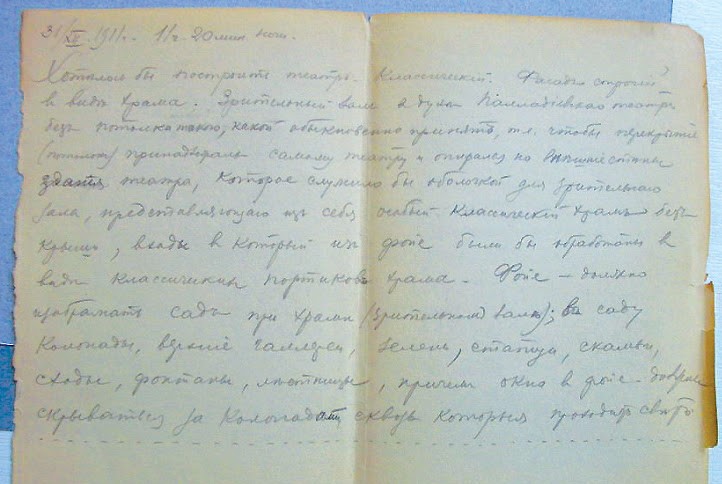

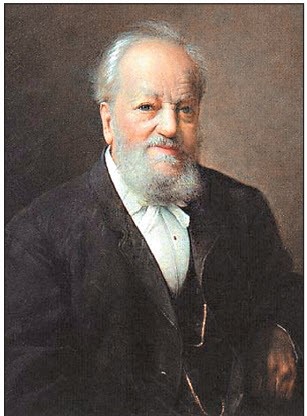















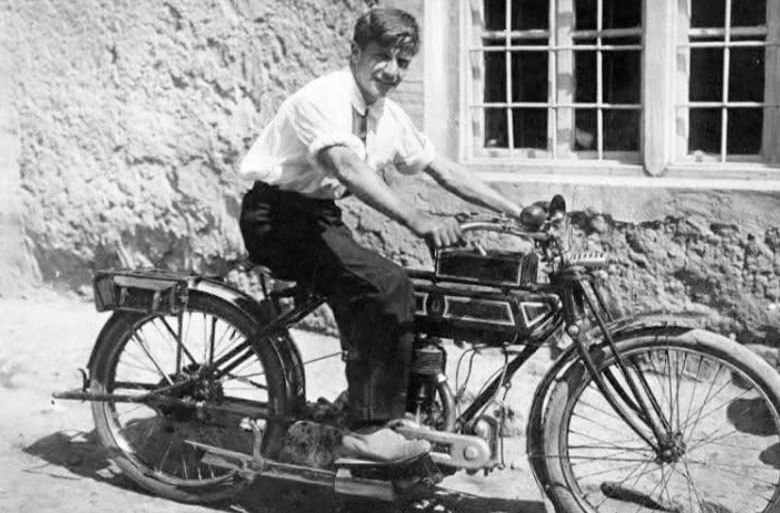


 Yuliy Tamanian
Yuliy Tamanian